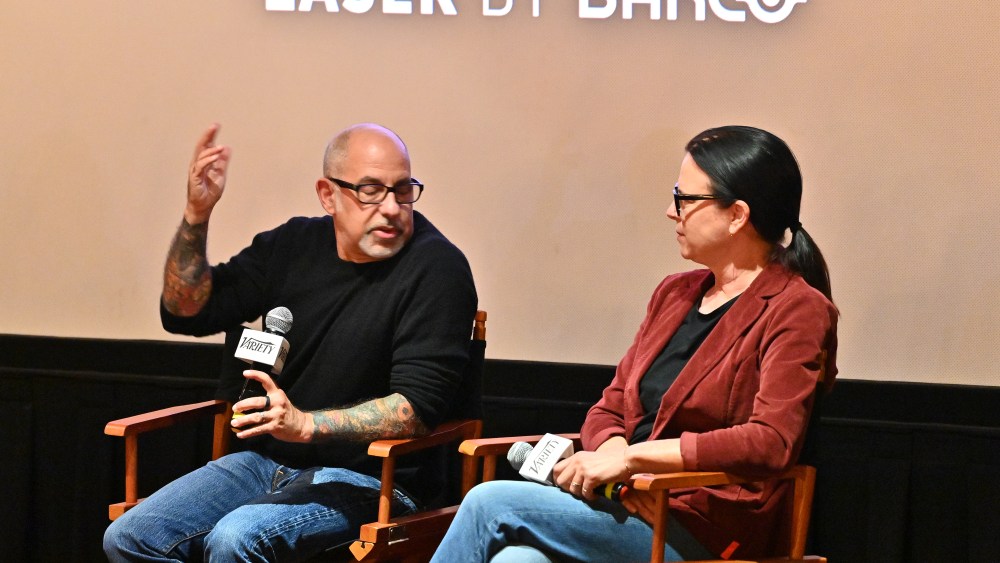Despite being made almost 60 years ago, Stanley Kubrick’s “2001: A Space Odyssey” still holds up.
Its groundbreaking special effects inspired George Lucas, James Cameron, Christopher Nolan and more. The cultural impact can be seen in “Blade Runner” and even in David Bowie’s work. The film is a staggering experience, from its “Dawn of Man” sequence to its ending. In between, there are spaceships and HAL, the super-intelligent computer that was way ahead of its time. Kubrick had AI on screen before it was even a term.
Speaking about the film’s impact, executive producer David S. Goyer called its technical achievements “amazing.”
Goyer was joined by cinematographer Nicole Hirsch Whitaker in conversation at the Variety 120 Screening Series presented by Barco, a summer-long program hosted by Jazz Tangcay that celebrates Variety‘s 120th anniversary by showing iconic films, including “All About Eve” and “The Wizard of Oz.”
Goyer explained the background of how Kubrick made the film in conjunction with Arthur C. Clarke’s novel and how it couldn’t be released before the film. Goyer said, “There are details in the novel that aren’t in the film because Kubrick kept cutting things out. After the initial release, Kubrick cut another 17 minutes of finished scenes out of the movie, and subsequently had his assistant burn the negatives.”
Those negatives were never seen again.
Whitaker was introduced to “2001: A Space Odyssey” while at school, had studied it, and learned how Kubrick was hands-on in every department. Her professors explained how the filmmaker was not just the director. “He was the production designer, he was the cinematographer. So everybody who was there with him was in his world and doing work with him. And even though he was very collaborative, he also had his mark on everything.”
Despite being nominated for 13 Academy Awards for over five decades of work, Kubrick only walked away with one win. It was for the best visual effects Oscar in 1969 for “2001: A Space Odyssey.”
The staggering Dawn of Man opening was a groundbreaking achievement and used front projection to shoot. At the time, it was the largest front projector ever made. The actors were mimes who were in costume, while the background plates were shot in Africa. Said Goyer, “It’s being projected from the front into a mirror.”
Whitaker went on to say that while filmmaking has since evolved with the volume stage, the sequence still remains a groundbreaking moment in film. “You cannot shoot wide shots on the volume. You wouldn’t be able to do this.”
Goyer added, “Everything he did, no one would ever do again. That’s why it looks so amazing.”
Aside from the striking visuals, Kubrick punctuates the film’s soundtrack with classical music cues. But to further add to the bold choices, Kubrick would use long stretches of silence, which add to the tension of the film. Said Goyer, “If you think the way that a typical movie would unfold, when a crew member dies, you would also have the remaining actors say, ‘Oh my God,’ and there would be sad music. There would be backstories.” Boyer went on to say, “He just kind of took all of the existing rules of film and just said, ‘fuck you.’”
Whittaker pointed out that Kubrick’s portrayal of space was intriguing. “Don’t you wonder how he knew that space would be like that and so silent?”
Watch the video above.
